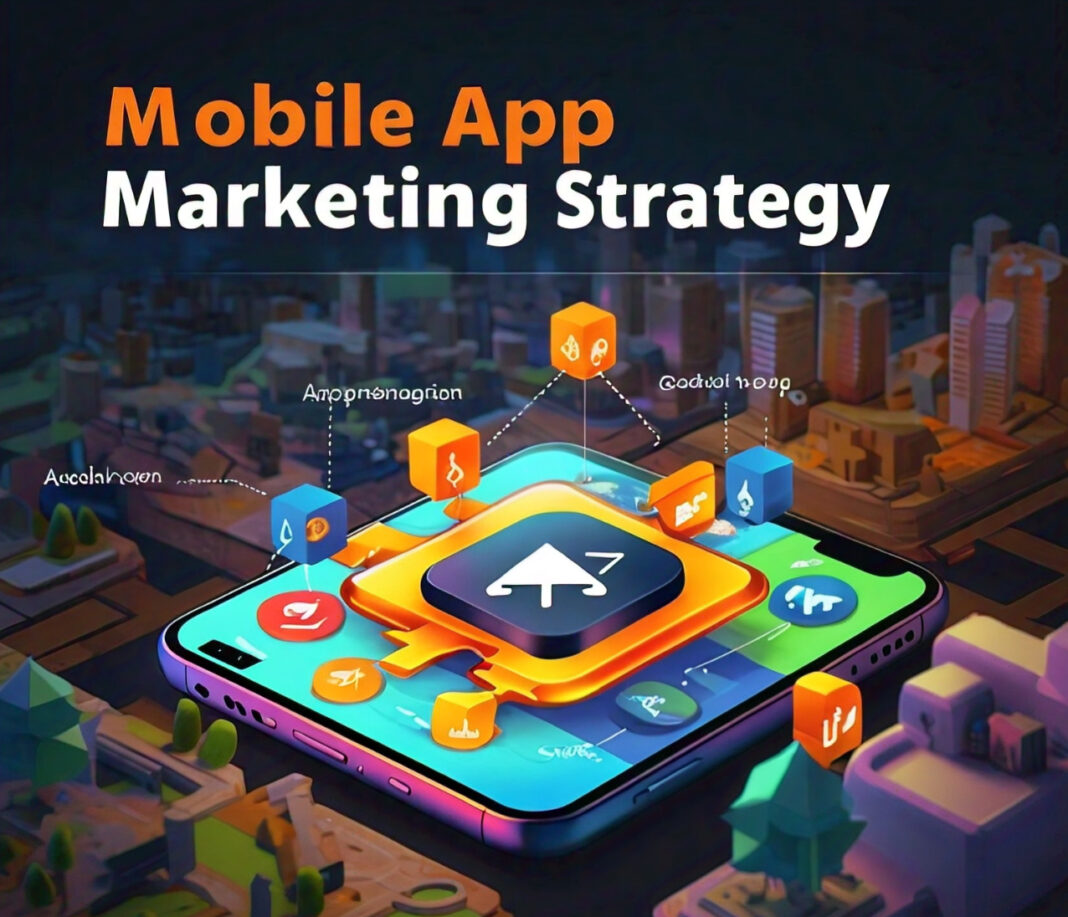Updates aren’t just bug fixes or adding in new features; they’re all about keeping your software relevant, secure, and true to user needs. A well-considered update strategy will significantly improve your user retention, attract more users, and retain your app’s competitiveness in an oversaturated marketplace.

In this post, we give the run-down on multiple app update strategies to help you retain and grow your users, all while keeping your app fresh and at the forefront of innovation. Herein, we’ll be talking about the importance of periodic updates, how to plan and implement these effectively, and some best practices to take note of so the update process will be as smooth as possible.
Why App Updates Matter
Understanding why app updates matter comes in before talking about concrete strategies.
- User Retention: If an application is updated regularly, it shows that you keep ensuring the application doesn’t get stale, and this will result in higher user trust and loyalty.
- Security: Often, updates may include very critical security patches protecting users from a number of threats or vulnerabilities.
- Performance Improvements: Updates might optimize application performance and make applications faster and more efficient.
- New Features: New features will keep the application fresh and exciting to the users, which could lead to new downloads.
- Bug Fixes: Applications are never perfect, and updates give the developers time to fix the problems reported by the users.
- Compatibility: With operating systems and devices constantly changing, an update ensures that your application keeps up with recent technology. Now that we understand why updates matter, let’s look at some effective ways to keep your application up-to-date:.
- Establish a Regular Cadence for Updates
Perhaps the most effective approach towards updating an application is actually setting a regular update cadence and sticking to it. There are some distinct advantages to doing so:
- Predictability: Users start expecting updates at the same time, thus building some sort of anticipation.
- Resource Management: A pre-set schedule allows your development team to properly plan for and manage resources efficiently.
Consistency: Providing updates on a regular basis gives proof of your commitment to update and evolve the application over time.
To set the periodicity of your releases, take into consideration factors like:
- Application’s complexity
- Size of the development team
- User feedback and feature request
- Industry trends and competitors
For most applications, an update cycle once in a month or once in every couple of months can be enough. In the case of rapidly evolving applications, you would prefer a shorter schedule for updates whereas, for more stabilized and established applications, you would go for an extended update cycle.
2. Listen to Users’ Feedback
Your users are a goldmine for information in improving your app. Secondly, building a system to collect and analyze user feedback is crucial for effective app updates. Here’s how to make the most of user input:
- In-App Feedback: Provide an easy, uninterruptive mechanism for users to give feedback inside the app.
- App Store Reviews: Go through the comments regularly and respond to them through the app stores.
Social Media Monitoring: Set up notifications for social media mentions; interact with users on social media sites.
User Surveys: Run surveys from time to time to get more extensive feedback.
When you have feedback, you categorize it, depending on the number of times one problem or request is mentioned, by the impact on users’ experiences, and by resources that would be needed to effect the change.
User feedback and functionality requests addressed, and therefore show that you truly value the input of your users, which can go a long way in boosting user satisfaction and loyalty.
3. Balance New Features with Performance Improvements
While adding new features is exciting, this should be balanced with performance improvements and bug fixes. A good rule of thumb could be the 80/20 rule:
-80% of your update should be spent on improving the features, fixing bugs, and performance enhancements.
-20% can be spent on new features.
This balance will keep your application stable and user-friendly while still offering fresh content for the users. When you are planning your updates, consider:
Performance Metrics: This is the monitoring of application performance and prioritizing improvements based on key indicators such as load time, battery use, and memory consumption.
Bug Reports: Keep a running list of all bugs reported and fix the most important ones in every new update. User Flow: Analyze how your users are using your app, improving navigations of common tasks. New Technologies: Stay updated on new technologies or APIs that could help improve your app.
In particular, a fast, stable application with fewer features will often give the better user experience than a feature-rich application that’s slow or buggy.
4. Perform Phased Rollouts
Releasing updates to all users at once is risky. If there’s an unforeseen problem, it could affect your entire user base. Instead, consider performing phased rollouts:
- Beta Testing: Make new versions available to a small group of beta testers before the public.
- Gradual Rollout: Only a small percentage of users are allowed to receive the update in the beginning, which, over time, is increased gradually.
- A/B Testing: Publish different versions of updates to distinct groups of users in order to compare performance and user satisfaction.
Through phased rollouts, you can:
- Find out issues and fix them before they affect all users
- Get real-world performance data
- Refine your update strategy based on early feedback
Tools like Google Play’s staged rollouts, or TestFlight for iOS, will help you actualize this approach effectively.
5. Keep Your Communication Crystal Clear
Clear communication about the update is paramount for gaining and maintaining user trust and expectation management. Following are some best ways to do that:
Detailed Release Notes: Clearly explain what is new or what has changed in each update.
In-app Notifications: Highlight new features or significant changes through in-app messaging.
Email Updates: Inform your user base of major updates via email. Social Media Announcements: Use your social media channels to get your users hyped about upcoming updates. And remember, when updating, one must also elicit the following: Highlight how the update will benefit the users Describe changes to any legacy features or user interfaces Include instructions on how to use new features Mention known issues and one’s plan for resolving those
Clear communication makes the process of updating nondeterrent, and even positive, for the users.
6. Monitor Performance Post-Update
Your work doesn’t end with the release of an update. It is very important to monitor how the update will perform in the real world. This includes:
- Crash Reports: Carefully monitor crash reports for the quick identification and resolution of new issues.
- User Feedback: Keep records of the App Store reviews and other channels with regard to user’s reaction to the update.
- Usage Metrics: Record how users are using new features and whether there is any change in overall use patterns.
- Performance Metrics: Continued tracking of app performance would ensure that the update did not make it slower or less stable.
Be prepared to publish a hotfix to patch important problems that might occur, rather quickly. This kind of responsiveness can retain user trust even when things don’t go exactly as desired.
7. Plan Long-term Evolution
Similarly to regular updates, make sure to implement a plan for the long-term future of your app. That is to say:
- Technology Trends: Keep yourself informed about emerging technologies that might have an effect on your application in the near future.
- User Behaviour Changes: Understand the trends in how user behaviors and expectations are changing in the category of your app.
• Platform Changes: Expect game-changing updates to the very platforms your app resides on; new OS versions, device capabilities turning up, etc.
Long-term planning lets you: • Phase major changes over successive updates
• Future-proof your codebase
• Align your app’s roadmap with the overall business strategy
Remember, great apps do not just react to change; they foresee it and effect change.
8. Optimize for App Store Algorithms
App store optimization is a continuous process, and updates are a main part of this. Here’s how you can optimize your update strategy for app store algorithms:
- Keyword Optimization: Make sure to update your keywords in your app regularly with what is currently trending and according to the way users are searching.
- Update Frequency: Most app stores rank apps higher that are more frequently updated, since it signals active development of the app.
• Reset Rating: Some app stores will let you reset ratings with major updates, which could be useful if you have greatly improved your app.
• Feature Highlights: Leverage the app store’s features that allow you to highlight important updates. Examples include the “What’s New” section in Google Play.
Any update is a good opportunity to improve your app’s visibility in app store search results.
9. Consider Different Update Types
Not every update is created equal. You can create different update types depending on the content and importance of the release, including:
- Minor Updates: Small bug fixes or minor tweaks; these can be released often.
- Feature Updates: When new features are added, or existing features see considerable enhancements.
- Major Version Updates: When the functionality of the app or the significant change in UI.
- Compatibility Updates: So that your app will be working with the new OS version or device type.
Each type may call for a different approach to development, testing, and communication.
10. Learn from Each Update
Finally, take each update as an opportunity to learn. After every release:
‐ Analyze user feedback and usage data
Review the update process for further improvements that can be made in the future.
Document lessons learned for future updates.
This continuous learning process will help you refine your update strategy over time so that future updates are done more effectively and efficiently.
Conclusion
In the fast-moving world of mobile and desktop applications, one of the very important features that define the road to success in the long run is a good update strategy. Setting an update cadence, paying attention to users’ feedback, creating new features against optimizations, and implementing gradual deployments will maintain your app fresh, relevant, and up to the user needs.
Other important elements of any successful update strategy involve clear communication, post-update monitoring, and long-term planning. In this way, you will be able to optimize for both app store algorithms and learn with each update how to iteratively improve your app and the update process.
Remember, updating is not just about adding new features or taking care of bugs; it’s about continuous value to the user and staying competitive in the crowded marketplace. By following these strategies mentioned in the article, you’ll be well-armed to keep your application on the bleeding edge of innovation in front of both old and new users alike.
Successful app development is a journey, not a destination. With an effective update strategy, you commit to this journey and will enable your app to be a valuable part of your users’ digital lives for many years to come.






